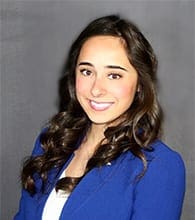 Reprinted with permission of the OAAA
Reprinted with permission of the OAAA
Jennifer Berardo attended the OAAA Legal Seminar in November. In her three years at Price, Meese, Shulman & D’Arminio in New Jersey, most of her legal work has involved billboards. Ms. Berardo agreed to share her fresh perspectives on the local permitting process.
In medicine, they say an ounce of prevention equals a pound of cure. In applying for billboards, an ounce of preparation beats anything else. Lack of preparation can cause delay, frustration, or worse.
While each application is unique, following these steps increases the odds for positive outcomes:
- Get a team, typically a billboard representative and engineer. Depending on the site, your team may also include a traffic expert and professional planner.
- Review the site (physically) with your team, noting the topography, surroundings, and any challenges (such as wetlands). Conducting overhead testing to ensure appropriate height and size of the structure may be helpful (via drone, crane, or balloon).
- Due diligence – learn as much as possible about the site:
- Obtain ownership records (title and deed restrictions)
- Review local compliance regarding taxes and other requirements (municipal professionals can identify pending violations)
- Are there known views in the area about billboards?
- Is re-zoning an option?
- Prepare the application, saluting thoroughness. It is imperative that each of the plans and exhibits prepared for the application appropriately identify the requested relief. The accompanying plans and exhibits should also serve to dispel any fears associated with the application. For example, you may consider having a traffic expert conduct an analysis.
- Meet with municipal professionals prior to the hearing. They can provide a wealth of insight and serve to avoid unnecessary delays during the hearing process. The local professionals have a direct link to the concerns of any reviewing land use board members that will be voting on the application. Therefore, understanding the concerns of the municipal professionals could assist in revising the application, if necessary, prior to a hearing and a vote.
- Know opposing arguments. Are these objections legitimate, unfounded, competitive, or based on misinformation?
- Listen to concerns. Be proactive to explain your position and demonstrate the benefits of outdoor advertising.
- Know the research, case law, and what other jurisdictions have done. Beyond the application itself, be prepared to explain safety, public benefit, and technology. Like other changes, the conversion of billboards from static to digital prompts questions. Be ready to answer.
Diligent preparation can mean the difference between a highly contentious application, or an application with which the municipality and its citizens are comfortable. Completing a majority of the legwork prior to any hearing provides a significant advantage in understanding any potential concerns with the site and/or surrounding neighborhood. It also provides the applicant with sufficient time to dispel any negative notions regarding the billboard application and its impact on the municipality. While it is impossible to plan and prepare for every issue that might arise with a billboard application, diligent preparation and a thorough understanding of the procedure can maximize the chances for a billboard approval.
[wpforms id=”9787″]
Paid Advertisement

















